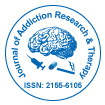Unsere Gruppe organisiert über 3000 globale Konferenzreihen Jährliche Veranstaltungen in den USA, Europa und anderen Ländern. Asien mit Unterstützung von 1000 weiteren wissenschaftlichen Gesellschaften und veröffentlicht über 700 Open Access Zeitschriften, die über 50.000 bedeutende Persönlichkeiten und renommierte Wissenschaftler als Redaktionsmitglieder enthalten.
Open-Access-Zeitschriften gewinnen mehr Leser und Zitierungen
700 Zeitschriften und 15.000.000 Leser Jede Zeitschrift erhält mehr als 25.000 Leser
Indiziert in
- CAS-Quellenindex (CASSI)
- Index Copernicus
- Google Scholar
- Sherpa Romeo
- Öffnen Sie das J-Tor
- Genamics JournalSeek
- Akademische Schlüssel
- JournalTOCs
- SafetyLit
- Nationale Wissensinfrastruktur Chinas (CNKI)
- Elektronische Zeitschriftenbibliothek
- RefSeek
- Hamdard-Universität
- EBSCO AZ
- OCLC – WorldCat
- SWB Online-Katalog
- Virtuelle Bibliothek für Biologie (vifabio)
- Publons
- Genfer Stiftung für medizinische Ausbildung und Forschung
- Euro-Pub
- ICMJE
Nützliche Links
Open-Access-Zeitschriften
Teile diese Seite
Abstrakt
Descriptive national survey of substance use in Nigeria
Taiwo Abosede Adamson, Adegboyega Oyekanmi. Ogunlesi, O lufemi Morakinyo, Akinwande Owuladewa Akinhanmi, Peter Olutunde Onifade, Olayiwola Erinosho, Alfred A Adewuyi, David Adekunle Fasiku, Timothy Olaoluwa Adebowale, Adegboyega Ogunwale, Edward Babatunde Somoye and O lu
Objectives: Epidemiological data on alcohol and drug use in Nigeria were documented since the 1940’s. These were, however, limited to specific population groups, had small sample sizes or did not adequately take into consideration the diverse geographical spread of the people, the ethnic diversity and the rural-urban variations. Therefore, this study aimed to survey the prevalence rates of drug use across all the geopolitical zones, including the sociocultural and the urban-rural divides, in Nigeria.
Methods: A cross-sectional survey of drug use was conducted in 2009 among Nigeria population aged 15-64 years and spread across the 6 geopolitical zones of the country. Adapted version of the World Health Organization Model Student Questionnaire was used for data collection. Analysis was descriptive.
Results: The response rate of 88.9% yielded 10,609 records for analysis. The majority of the respondents were males (52%), aged 25-34 years (29.6%), married (65.2%) and residing in the rural localities (53.0%). The drug with the highest prevalence rate of use was alcohol, (39%) lifetime, (30.3%) 12-month and (24.5%) 30 day. Cannabis was the most commonly used illicit drug with a lifetime use of 6.6%, 12-month of 2.6%, and 30 day of 1.8%. The prevalence rates of inhalants use were 6.8% lifetime, 3.9% 12-month and 3.2% 30-day. The geopolitical zones with the highest prevalence use of inhalants were the South-East and the North-Central zones. Tranquilizer use was highest in the South-West. Higher rates of drug use were generally associated more with the male gender and the urban localities.
Conclusion: The pattern of drug use in Nigeria varies across the geopolitical zones; therefore, the approaches and foci of drug intervention measures will also have to vary across this divide with considerations for the socio-cultural norms.
Zeitschriften nach Themen
- Allgemeine Wissenschaft
- Biochemie
- Chemie
- Genetik und Molekularbiologie
- Geologie und Geowissenschaften
- Immunologie und Mikrobiologie
- Klinische Wissenschaften
- Krankenpflege und Gesundheitsfürsorge
- Landwirtschaft und Aquakultur
- Lebensmittel & Ernährung
- Maschinenbau
- Materialwissenschaften
- Medizinische Wissenschaften
- Pharmazeutische Wissenschaften
- Physik
- Sozial- und Politikwissenschaften
- Umweltwissenschaften
- Veterinärwissenschaften
Klinische und medizinische Fachzeitschriften
- Anästhesiologie
- Augenheilkunde
- Betrieb
- Dermatologie
- Diabetes und Endokrinologie
- Gastroenterologie
- Genetik
- Gesundheitspflege
- Immunologie
- Infektionskrankheiten
- Kardiologie
- Klinische Forschung
- Medizin
- Mikrobiologie
- Molekularbiologie
- Neurologie
- Onkologie
- Pädiatrie
- Pathologie
- Pflege
- Toxikologie
- Zahnheilkunde

 English
English  Spanish
Spanish  Chinese
Chinese  Russian
Russian  French
French  Japanese
Japanese  Portuguese
Portuguese  Hindi
Hindi